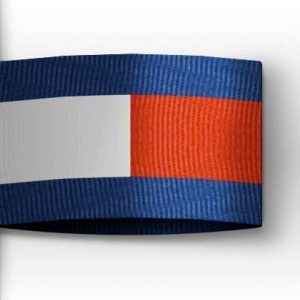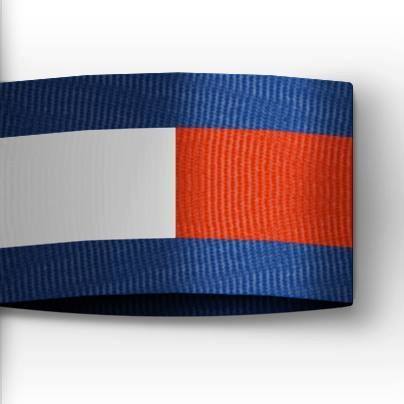Contents
Summary
Tommy Hilfiger is one of the world’s leading designer lifestyle brands creating a platform that inspires the modern American spirit. Founded in 1985, Tommy Hilfiger delivers premium styling, quality and value to consumers worldwide under the Tommy Hilfiger and Tommy Jeans brands.
Founder Tommy Hilfiger remains the company’s Principal Designer and provides leadership and direction for the design process. Tommy Hilfiger, which was acquired by PVH Corp. in 2010, is a global apparel and retail company. With the support of strong global consumer recognition, the brand has built an extensive distribution network in over hundred countries throughout North America, Europe, Latin America and the Asia Pacific region.
History
Tommy Hilfiger’s career in fashion began in 1969 when, as a high school student, he began buying jeans that he remodelled and sold for a markup in his hometown of Elmira, New York. At eighteen, he co-founded a clothing and record store named People’s Place. “The shop was where a kid could find bell-bottom jeans, fringed vests, and granny dresses, and they flew off the shelves”, per Vogue.
Using $150 he had saved from a job at a petrol station, he expanded the company into a chain of ten stores but despite being successful, disco killed hippie fashion, and People’s Place filed for bankruptcy in 1977. During this time, he fell in love with Susie Carona, an employee at one of his stores, married her and moved to New York to pursue a career as a fashion designer.
The couple was hired as a design team by Jordache, but were reportedly fired within a year. Yet, Hilfiger had developed a solid image as a hard-working passionate designer and was considered for positions at Perry Ellis and Calvin Klein. What he wanted, however, was to launch his own label. In the early Eighties, he met textile magnate Mohan Murjani who aspired to launch a men’s label.
With his backing in 1985, Hilfiger debuted his take on the preppy look i.e. button-down shirts, chinos and other styles, backed by a prolific campaign that included a billboard in Times Square. Later, Tommy Hilfiger allied with Hong- Kong based billionaire Silas Chou for financial backing and both Lawrence Stroll and Joel Horowitz, former executives of Ralph Lauren, were hired at Tommy Hilfiger, Inc., which at that time focused on men’s sportswear.
Tommy Hilfiger Corporation went public in 1992. After licensing Pepe Jeans USA in 1995, Hilfiger used his success in menswear as a springboard for womenswear. The following year, he debuted his women’s collection which was a runaway success and shortly he opened stores in Beverly Hills and London. The company launched its bed and bath line in 1998.
Throughout the nineties the marketing division worked in sync with the music industry and Hilfiger was sponsor for Pete Townshend’s Psychoderelict tour. During the Nineties, Hilfiger gave his collections a relaxed fit and became popular with the “preppy” scene; when Snoop Dogg wore his sweatshirt on Saturday Night Live, it sold out the next day! The company also sponsored Sheryl Crow’s “If It Makes You Happy” tour in 1997, Britney Spears ‘Baby One More Time’ and Lenny Kravitz’s ‘Freedom’ tours in 1999.
Women’s intimate apparel was introduced in 2001. Although sales declined that year, Hilfiger’s European sales rose. In 2003 Hilfiger invested in the overseas audience by re-focusing on the brand’s original style, ‘American cool’. He also adapted the business model to appeal to European retail culture, pursuing alliances with department stores and boutiques in fifteen countries. By 2004, Tommy Hilfiger Corporation reported revenues of $1.8 billion.
In 2006 Tommy Hilfiger Inc. was sold for reported $1.6 billion to Apax Partner. In March 2010, Phillips-Van Heusen bought Tommy Hilfiger Corporation for reported $3 billion. Fred Gehring, who launched Hilfiger’s European division in 1996, assumed the role of CEO. In July 2014 however he passed the torch to Daniel Grieder while he became executive chairman of Tommy Hilfiger Group and vice chairman of PVH.
In January 2015 Tommy Hilfiger debuted a digital showroom at its New York headquarters, which WGSN opined would “transform the traditional buying process.” With plans to open in other cities, Hilfiger described the showroom as “an innovation of the order process with cost saving potentials along the whole value chain.”
Gehring stepped down as chairman in August 2015 while Tommy Hilfiger remains chief designer, overseeing the creative process. Hilfiger’s achievements earned him distinguished awards including CFDA’s Geoffrey Beene Lifetime Achievement Award. His life and career has been chronicled in his memoir, American Dreamer, published on November 1, 2016.
In the pandemic era, Tommy Hilfiger has taken a vow of sustainable practices. Per Forbes, “Vowing to become fully circular by 2030, the new “Make It Possible” program is driven by an underlying mission to create fashion that ‘Wastes Nothing and Welcomes All.'”
Vision
Tommy Hilfiger’s vision has always been rooted in the idea of creating “classic American cool” – a blend of timeless, preppy style with a modern youthful twist. Since founding his namesake brand in 1985, Hilfiger has sought to capture the essence of American culture, designing clothing that reflects the casual, effortless elegance associated with it. However, his vision was not just about designing clothes but about creating an all-encompassing lifestyle brand that embraces inclusivity and appeals to a diverse audiences. By blending traditional Americana with fresh contemporary influences, Hilfiger’s designs speak to people who appreciate classic styles but also want a modern, fashionable edge.
At the core of Hilfiger’s vision is a commitment to innovation and adaptability. Over the decades, the fashion brand has embraced changes in technology, fashion, and consumer behavior, ensuring that it remains relevant to younger generations while staying true to its core aesthetic. Hilfiger was one of the pioneers of “see now, buy now” fashion shows, revolutionizing the way fashion brands interact with consumers by making collections immediately available for purchase after runway events. His vision also extends to sustainability and inclusivity, with the brand increasingly focusing on eco-friendly practices, diverse representation, and collaborations with global icons such as Gigi Hadid, Zendaya, and Lewis Hamilton. These partnerships have expanded the fashion brand’s appeal, making it not only a symbol of American fashion but a global force in contemporary style.
In addition to promoting a forward-thinking approach to fashion, Hilfiger’s vision emphasizes the democratization of style. He has always championed that fashion should be accessible, and his brand offers products at varying price points. This commitment to inclusivity is reflected in his collaborations with influencers and celebrities from diverse backgrounds, ensuring that the brand resonates with a global audience. Tommy Hilfiger’s vision is not just about creating beautiful clothing, but about fostering a sense of belonging and self-expression, empowering individuals to feel confident in their personal style.
Mission Statement
Tommy Hilfiger’s mission to become one of the leading sustainable lifestyle brands is deeply rooted in its commitment to responsible and ethical practices in every aspect of its business. The brand aims to integrate sustainability into its core values by focusing on how it creates its products, ensuring that each garment is made with care for both the environment and the people involved in its production. This includes using eco-friendly materials, adopting circular design principles to minimize waste, and employing sustainable production techniques that reduce the brand’s overall carbon footprint. By prioritizing innovation and accountability in its supply chain, Tommy Hilfiger seeks to offer high-quality, stylish products that also contribute to a healthier planet.
In managing its operations, Tommy Hilfiger is dedicated to making its entire business model more sustainable and transparent. The brand has set ambitious goals to reduce its environmental impact, such as increasing the use of renewable energy in its facilities, cutting down on water and chemical usage in manufacturing, and aiming for zero waste in its operations. Additionally, the company is committed to fair labor practices and ethical sourcing, ensuring that workers in its supply chain are treated with dignity and respect. Through rigorous oversight and collaboration with partners, Hilfiger seeks to lead by example, demonstrating that fashion brands can be successful while remaining socially and environmentally responsible.
Connecting with the community and stakeholders is also a key part of Tommy Hilfiger’s mission. The brand recognizes the importance of fostering a strong relationship with its customers, employees, and wider community by promoting inclusivity, diversity, and social responsibility. Hilfiger aims to engage its stakeholders through transparent communication and collaborative initiatives, including partnerships with organizations that advocate for sustainability and social justice. By building a brand culture that values both people and the planet, Tommy Hilfiger not only aims to drive positive change within the fashion industry but also inspires consumers to make more conscious choices. This holistic approach to sustainability positions Tommy Hilfiger as a leader in the movement toward a more ethical and environmentally responsible future.
The Team
Tommy Hilfiger: Principal Designer.
Martijn Hagman: CEO, Tommy Hilfiger Global and PVH Europe.
Avery Baker: President and Chief Brand Officer, Tommy Hilfiger Global.
Alegra O’Hare: Chief Marketing Officer, Tommy Hilfiger Global.
Tom Chu: Regional President, PVH Asia Pacific.
Products and Services
Tommy Hilfiger’s products are synonymous with timeless American style, blending classic design elements with modern fashion sensibilities. The brand is most renowned for its preppy, nautical-inspired apparel, which includes everything from casual wear like polo shirts, jeans, and sweatshirts, to tailored pieces such as blazers and outerwear. Known for its signature red, white, and blue color palette, Tommy Hilfiger has built its identity on creating high-quality, versatile garments that appeal to a wide demographic. The brand also extends its offerings to accessories, footwear, fragrances, and even home goods, all of which maintain the same spirit of laid-back luxury and all-American cool.
Among Tommy Hilfiger’s most iconic collections is the Tommy Jeans line, which taps into the brand’s roots in youth culture and streetwear. Introduced in the 1990s, Tommy Jeans became a cultural phenomenon, popularized by celebrities and hip-hop artists. Known for its oversized logos and bold, casual aesthetic, this collection continues to be a fan favorite, appealing to both nostalgic consumers and younger generations who embrace its retro vibe. Another standout collection is the TommyXGigi collaboration with model Gigi Hadid, which brought a fresh, modern twist to the brand’s preppy DNA. This limited-edition collection combined Hadid’s personal style with Hilfiger’s classic designs, resulting in trendy, sporty pieces that helped the brand connect with a younger, fashion-forward audience.
In addition to its ready-to-wear collections, Tommy Hilfiger also offers a variety of services that enhance the customer experience. The brand provides bespoke tailoring services, allowing clients to personalize their garments with custom fits and details. Furthermore, Tommy Hilfiger has embraced digital innovation by integrating technology into its shopping experience, such as offering virtual shopping appointments and online personalization services. Through collaborations and sustainability initiatives, the brand also engages in limited-edition drops and capsule collections, giving customers exclusive access to unique, limited-run pieces. These services reflect Tommy Hilfiger’s commitment to delivering not only high-quality products but also a seamless, personalized shopping experience that caters to modern consumer needs.
Awards and Recognition
Tommy Hilfiger’s achievements earned him distinguished awards including CFDA Geoffrey Beene Lifetime Achievement Award.
References
- Official Website Tommy Hilfiger
- Tommy Hilfiger Fall 2023 Vogue
- Tommy Hilfiger Fall 2022 Vogue
- Tommy Hilfiger Fall 2021 Vogue
- Tommy Hilfiger: The Inspirations That Made Him Become A Fashion Icon Forbes
- Turnaround Tommy Forbes
- Facebook profile of Tommy Hilfiger Facebook
- Embracing risk Forbes
- Tommy Hilfiger is GQ’s design legend of the year GQ
- Twitter profile of Tommy Hilfiger Twitter
- Tommy Hilfiger: Stitching Together a Family Parade
- Will Tommy Hilfiger end fast fashion Forbes
- Tommy Hilfiger Hello
- Instagram profile of Tommy Hilfiger Instagram
- Tommy Hilfiger wants to ‘create fashion for all’ GQ
- Wikipedia profile of Tommy Hilfiger Wikipedia
- Tommy Hilfiger Spring 2023 Vogue
- Youtube profile of Tommy Hilfiger Youtube
- Tracing Tommy Hilfiger’s All-American Career The Cut
- LinkedIn profile of Tommy Hilfiger LinkedIn
- 25 years of style LA Times





